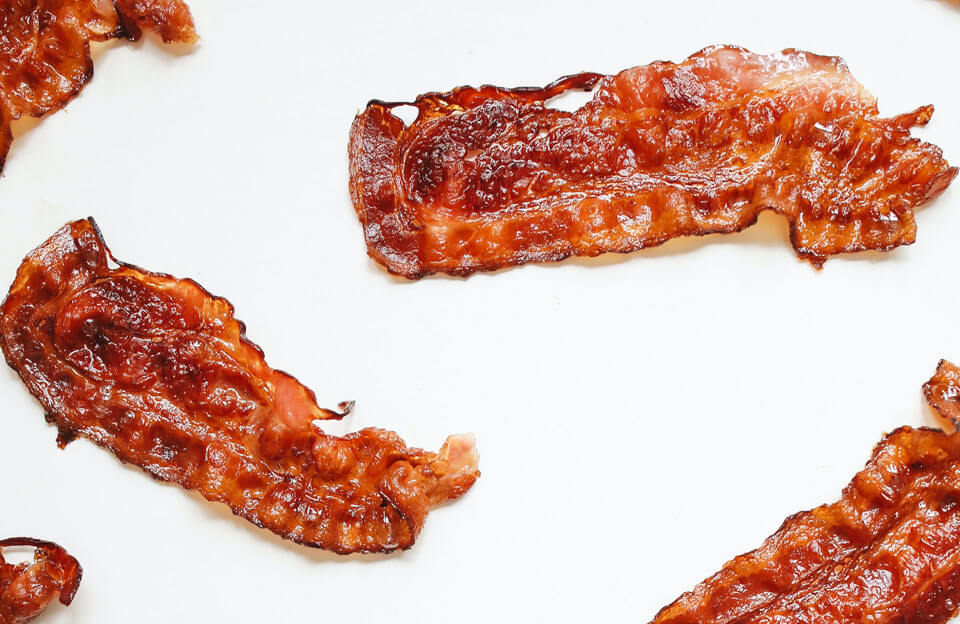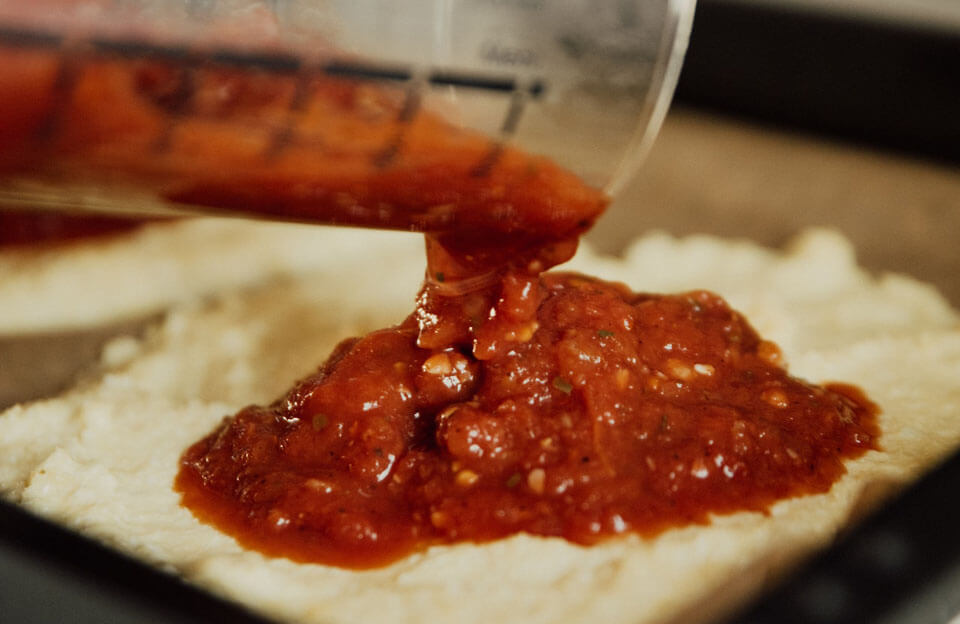Beef jerky, cuts of beef that have been dried and salted, is a popular snack in many parts of the world. It’s portable, nonperishable, and easy to make or get. Since it’s low in carbs, many diabetics may consider beef jerky a part of their diet.
Should beef jerky be an occasional treat or something to snack on regularly? Here’s how beef jerky breaks down as a snack and if it’s good for those with diabetes.
Nutrition Facts of Beef Jerky
Beef jerky is usually made from dried beef and various spices and sauces. It is often cured or smoked before it is dried and served. [1] Since it’s made from so many different recipes, there’s no one list of the nutrients in beef jerky.
The nutritional facts often depend on whether you are buying it prepackaged or making it yourself. Packaged beef jerky has ingredients that change its nutritional profile because of its need to stay fresh on the shelf.
Here’s how one type of packaged jerky and one type of homemade jerky break down.
Beef jerky, chopped and formed
Serving size: 1 piece (28g) [2]
| Nutrient | Amount |
| Calories | 82 cal |
| Protein | 6.64g |
| Fats | 5.12g |
| Total carbohydrate | 2.2g |
| Fiber | 0.36g |
| Sugars | 1.8g |
| Calcium | 4 mg |
| Iron | 1.08 mg |
| Sodium | 356 mg |
| Riboflavin | 0.02 mg |
| Thiamin | 0.03 mg |
| Zinc | 1.62 mg |
| Niacin | 0.34 mg |
| Vitamin C | 0 |
| Vitamin A | 0 |
| Saturated fat | 2.16g |
| Trans fat | 0 |
| Cholesterol | 9.6 mg |
| Glycemic index rating | 0 [3] |
BEEF JERKY
Serving size: 1 piece (28g) [4]
| Nutrient | Amount |
| Calories | 286 cal |
| Protein | 35.7g |
| Fats | 5.36g |
| Total carbohydrate | 25g |
| Fiber | 0g |
| Sugars | 25g |
| Calcium | 71 mg |
| Iron | 3.86 mg |
| Sodium | 1860 mg |
| Riboflavin | 0 mg |
| Thiamin | 0 mg |
| Zinc | 1.6 mg |
| Niacin | 0 mg |
| Vitamin C | 0 |
| Vitamin A | 0 |
| Saturated fat | 1.79g |
| Trans fat | 0 |
| Cholesterol | 89 mg |
| Glycemic index rating | 0 [5] |
Pros of Beef Jerky for Diabetics
The biggest pro about beef jerky is that it is low in carbs. Beef on its own has no carbs whatsoever. [6] Since it has no carbs, pure beef jerky will not cause blood sugar spikes. Packaged beef jerky often has carbs, but fewer than many other snacks, 2 or 3g per serving. It’s also high in protein; some types have as much as 9.4 per serving. [7]
Many vitamins and minerals can be found in beef jerky. Zinc is the most abundant, with a serving containing 21 percent of the daily recommended value. It is also a good source of vitamin b12 and iron. [8]
Once beef jerky is made, it can last for a very long time. It has a shelf life of one to two years, even after a package has been opened. (This is for ready-made beef jerky; homemade jerky typically lasts two or three months.) [9] So not only can it sit in the pantry for a long time, it can be placed in a bag or purse as an on-the-go snack that can be eaten whenever needed.
Cons of Beef Jerky for Diabetics
While all of those advantages make beef jerky seem like the perfect snack, it also has some serious downsides.
All beef jerky is high in saturated fat. While everyone needs to consume a certain amount of fat, saturated fat is the kind that should be avoided. It can increase your risk of heart disease and type 2 diabetes. [10]
Beef jerky is also high in sodium. The ideal amount of sodium most people should consume is 1500 mg a day. [11] Homemade beef jerky like the kind listed above still contains almost twenty percent of that daily requirement. Packaged jerky can go even higher; the kind listed before actually contains more sodium than that in one piece – not good for anyone, diabetic or not.
Homemade beef jerky may not reach internal temperatures of 155°F (74°C) when cooked and dried. This increases the risk of the meat carrying e. coli bacteria. [12]
The most worrying problem with beef jerky is related to how it is prepared and almost exclusively applies to packaged beef jerky. Beef jerky made at home is usually just dried in a dehydrator.
Packaged beef jerky, because it needs to last on the shelf, is often cured and smoked before drying. This increases the overall flavor, but it is then considered processed meat. High consumption levels of processed meat, especially red meat, are associated with an increase in certain types of cancers, most notably colon cancer. [13]
A final problem with beef jerky is that it can potentially increase your risk of type 2 diabetes – not from the fat, but from the iron in the meat. One study done in China found that those who ate more red meat and products with heme iron in them, like beef jerky, had greater rates of type 2 diabetes than those who did not frequently consume those products. [14]
Eating Advice for Diabetics
There can be a lot of confusing advice for diabetics about what to eat. Fortunately, the major organizations for diabetics agree on a few things. Those include: [15][16]
- Eat less added sugar and processed foods.
- Eat several servings of fruit and vegetables per day, especially non-starchy vegetables.
- When you eat carbohydrates, eat whole grain options as much as possible, like whole grain bread and pasta. Try to avoid white flour.
- Protein foods should be low-fat meats, like chicken and turkey, fish, and plant sources like beans, lentils, and nuts.
- Have some fats every day, but stick to the ones found in vegetable oils, fish, nuts, and avocados.
- Dairy products should be low-fat versions and not have any added sugars.
- Make your own foods whenever possible. Do not use any salt, and try to substitute typically processed foods with homemade versions.
FAQ
Will Beef Jerky Spike My Blood Sugar?
Homemade beef jerky has no carbs, so it will not spike your blood sugar. Packaged beef jerky may have added sugars that could raise your blood sugar, but it is unlikely to spike to high levels.
Heathy Snacks Suggestions for Diabetics
Healthy snacks for diabetics should follow the usual recommendations for a diabetic diet. Fruits and non-starchy vegetables, lean meats and fish, whole grain bread and cereals, and low-fat dairy products all make good snacks. Beef jerky is fine on some occasions but has salt and fat that make it a less healthy option.
Beef vs. Chicken Jerky, Which is Better?
The nutrients in beef and chicken jerky are similar, but chicken jerky is somewhat lower in saturated fat than beef jerky. Beef jerky is higher in iron. Chicken jerky is probably a better option on a regular basis, but like all meat, jerky can contain too much salt and sugar when you pick prepackaged ones.
References
- Kim, G.-D., Go, G.-W., Lim, H.-J., Jung, E.-Y., Seo, H.-W., Jeong, J.-Y., Joo, S.-T., & Yang, H.-S. (2014). Physicochemical Characteristics of Beef Jerky Cured with Salted-fermented Anchovy and Shrimp. Korean Journal for Food Science of Animal Resources, 34(1), 99–105. https://doi.org/10.5851/kosfa.2014.34.1.99
- Snacks, beef jerky, chopped and formed. (n.d.). FoodData Central. https://fdc.nal.usda.gov/fdc-app.html#/food-details/167536/nutrients
- Jerky nutrition, glycemic index, calories, net carbs & more. (n.d.). Food Struct. Retrieved March 13, 2023, from https://foodstruct.com/food/jerky
- Beef Jerky, Tillamook Country Smoker Inc (n.d.). FoodData Central. Retrieved March 13, 2023, from https://fdc.nal.usda.gov/fdc-app.html#/food-details/2023754/nutrients
- Jerky nutrition, glycemic index, calories, net carbs & more. (n.d.). Food Struct. Retrieved March 13, 2023, from https://foodstruct.com/food/jerky
- Beef, short loin. (n.d.). FoodData Central. https://fdc.nal.usda.gov/fdc-app.html#/food-details/746763/nutrients
- Snacks, beef jerky, chopped and formed. (n.d.). FoodData Central. https://fdc.nal.usda.gov/fdc-app.html#/food-details/167536/nutrients
- Snacks, beef jerky, chopped and formed. (n.d.). FoodData Central. https://fdc.nal.usda.gov/fdc-app.html#/food-details/167536/nutrients
- Cindy. (n.d.). How Long Does Beef Jerky Last? Shelf Life, Storage, Expiration Date. Eat by Date. Retrieved March 12, 2023, from http://www.eatbydate.com/proteins/meats/does-beef-jerky-go-bad/
- Fats | ADA. (n.d.). Diabetes.org. https://diabetes.org/healthy-living/recipes-nutrition/eating-well/fats
- American Heart Association. (2019). Effects of Excess Sodium Infographic. Www.heart.org. https://www.heart.org/en/healthy-living/healthy-eating/eat-smart/sodium/effects-of-excess-sodium-infographic
- Fernandes, F. P., Voloski, F. L. S., Ramires, T., Haubert, L., Reta, G. G., Mondadori, R. G., Silva, W. P. da, Conceição, R. de C. dos S. da, & Duval, E. H. (2017). Virulence and antimicrobial resistance of Salmonella spp. and Escherichia coli in the beef jerky production line. FEMS Microbiology Letters, 364(9). https://doi.org/10.1093/femsle/fnx083
- WHO. (2015, October 26). Cancer: Carcinogenicity of the consumption of red meat and processed meat. Www.who.int. https://www.who.int/news-room/questions-and-answers/item/cancer-carcinogenicity-of-the-consumption-of-red-meat-and-processed-meat
- Talaei, M., Wang, Y.-L., Yuan, J.-M., Pan, A., & Koh, W.-P. (2017). Meat, Dietary Heme Iron, and Risk of Type 2 Diabetes Mellitus. American Journal of Epidemiology, 186(7), 824–833. https://doi.org/10.1093/aje/kwx156
- Eating Well | ADA. (n.d.). Diabetes.org. https://diabetes.org/healthy-living/recipes-nutrition/eating-well
- Diabetes UK. (2017). What is a healthy, balanced diet for diabetes? Diabetes UK. https://www.diabetes.org.uk/guide-to-diabetes/enjoy-food/eating-with-diabetes/what-is-a-healthy-balanced-diet


